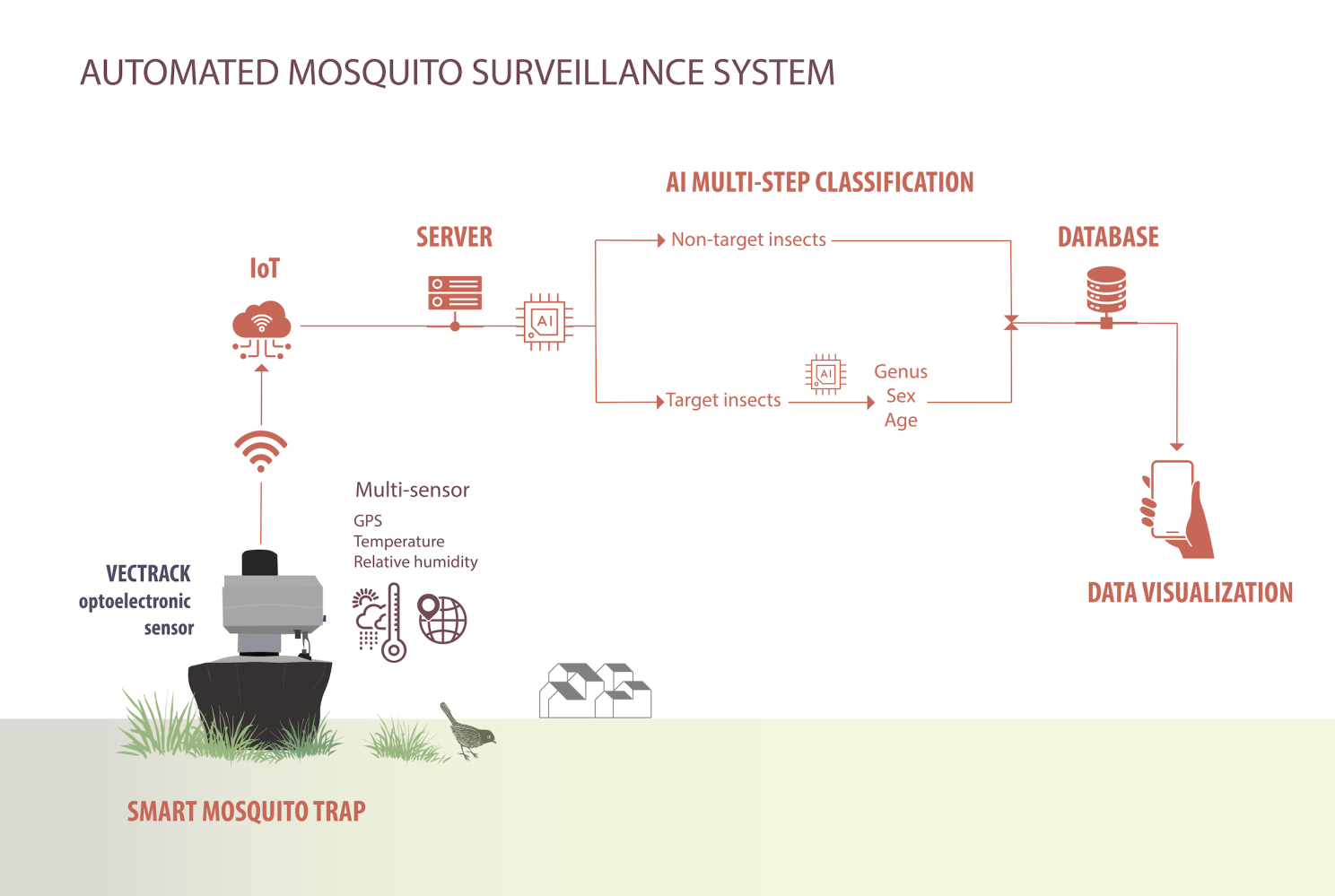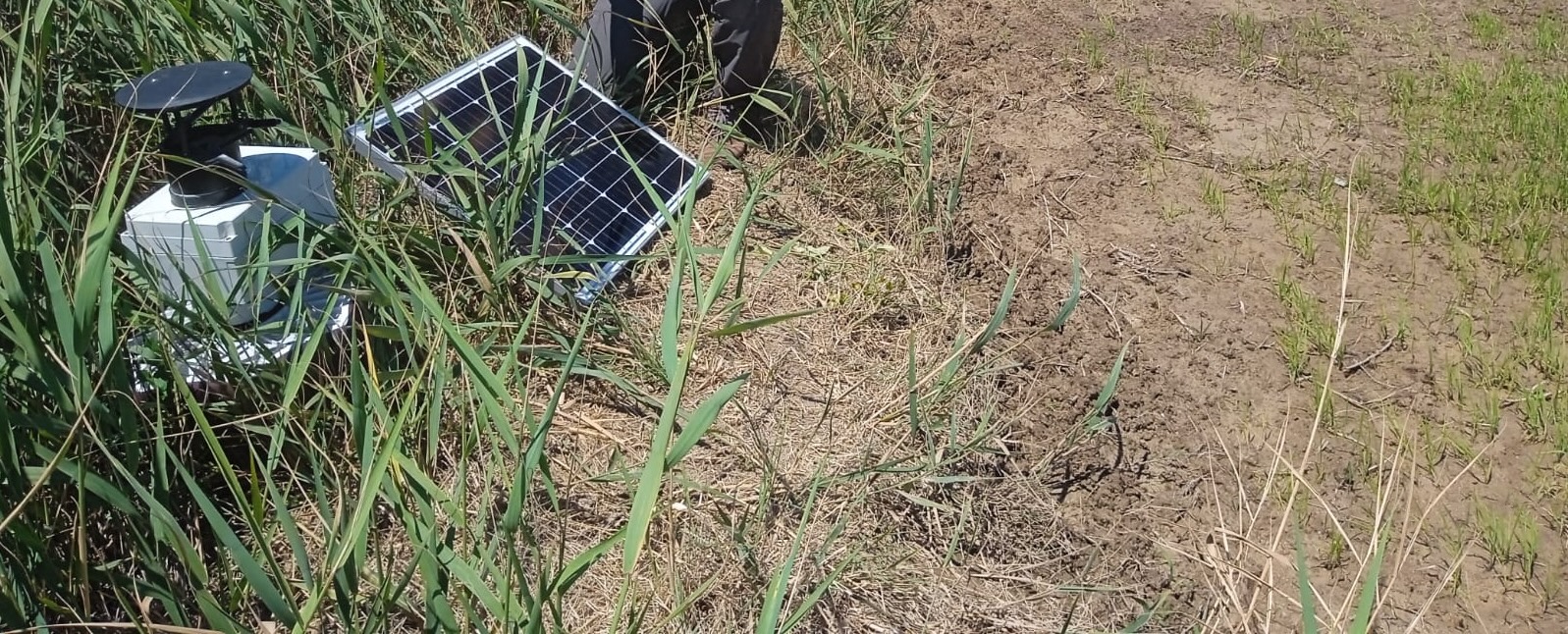In our ongoing efforts to enhance mosquito surveillance and early warning systems, the E4Warning consortium is leveraging innovative technologies, including the improvement of the IRIDEON SL smart-traps. These smart-traps are designed to automate and improve the efficiency of mosquito monitoring, addressing the challenges faced by traditional methods.
Overcoming Traditional Surveillance Challenges
Traditional mosquito surveillance methods are costly and time-consuming, requiring significant professional resources for trap placement, sample collection, and laboratory analysis. Additionally, there is an inevitable time lag between placing traps and collecting samples, which can lead to inaccurate and untimely monitoring of mosquito populations.
The IRIDEON smart traps are off-the-shelf commercial suction traps equipped with the VECTRACK optoelectronic sensor prototype developed by IRIDEON SL in Barcelona. These sensors are capable of distinguishing between mosquito species, sex, and age under both laboratory and field conditions. The VECTRACK sensor includes an emitter, an array of LEDs, and photo-transistors acting as photoreceptors, all working together to create a light field. When a mosquito is drawn into the trap, its wing flapping modulates the light field, generating a species-specific signature. This signature is processed using AI methods, including rule-based systems, genetic algorithms, artificial neural networks, and fuzzy models, to classify the mosquito by genus, species, sex, and age.
Each VECTRACK recording includes GPS coordinates, date and time of capture, ambient temperature, and relative humidity. Every 30 minutes, the field sensor transmits data batches to the server via the mobile phone network. The server then classifies each mosquito event, providing detailed and accurate data on mosquito populations in real-time. This automation reduces the need for manual intervention and enables continuous monitoring.

Field Performance and Global Testing
The VECTRACK sensor has demonstrated its effectiveness in real-world scenarios, achieving high accuracy in field trials conducted in Spain. In El Prat de Llobregat (2021) and Rubí (2022), the sensor achieved 95.5% accuracy in species detection and 88.8% accuracy in classifying the genus and sex of mosquitoes. Check the work performed by Gozález-Pérez et al.: Field evaluation of an automated mosquito surveillance system which classifies Aedes and Culex mosquitoes by genus and sex. Parasites Vectors 17, 97 (2024). https://doi.org/10.1186/s13071-024-06177-w

Ongoing Field Tests Under E4Warning
The E4Warning project is testing the efficacy of the IRIDEON smart-traps under various conditions:
- Spain (Barcelona): VECTRACK sensors are deployed at five strategic monitoring sites across the city, focusing on Culex pipiens and Aedes albopictus. Agència de Salut Pública de Barcelona – ASPB
- Brazil (Rio de Janeiro and Brasilia): Field trials with local populations of Aedes aegypti and Culex quinquefasciatus in collaboration with Instituto Oswaldo Cruz, Fiocruz. Fundação Oswaldo Cruz (Fiocruz)
- Spain (Girona): Testing in non-urban environments like the Botanical Garden of Blanes and Aiguamolls de l’Empordà Natural Park, where diverse mosquito species are present. CSIC
- Greece (Athens): Planned deployment in the Attica region, focusing on critical points of entry for Aedes aegypti and areas of significant vector importance. Benaki Phytopathological Institute
To learn more about IRIDEON smart-traps refer to:
- González-Pérez, M.I., Faulhaber, B., Aranda, C. et al. Field evaluation of an automated mosquito surveillance system which classifies Aedes and Culex mosquitoes by genus and sex. Parasites Vectors 17, 97 (2024). https://doi.org/10.1186/s13071-024-06177-w
- González-Pérez MI, Faulhaber B, Williams M, Brosa J, Aranda C, Pujol N, et al. A novel optical sensor system for the automatic classification of mosquitoes by genus and sex with high levels of accuracy. Parasit Vectors. 2022;15:190. https://doi.org/10.1186/s13071-022-05324-5.
